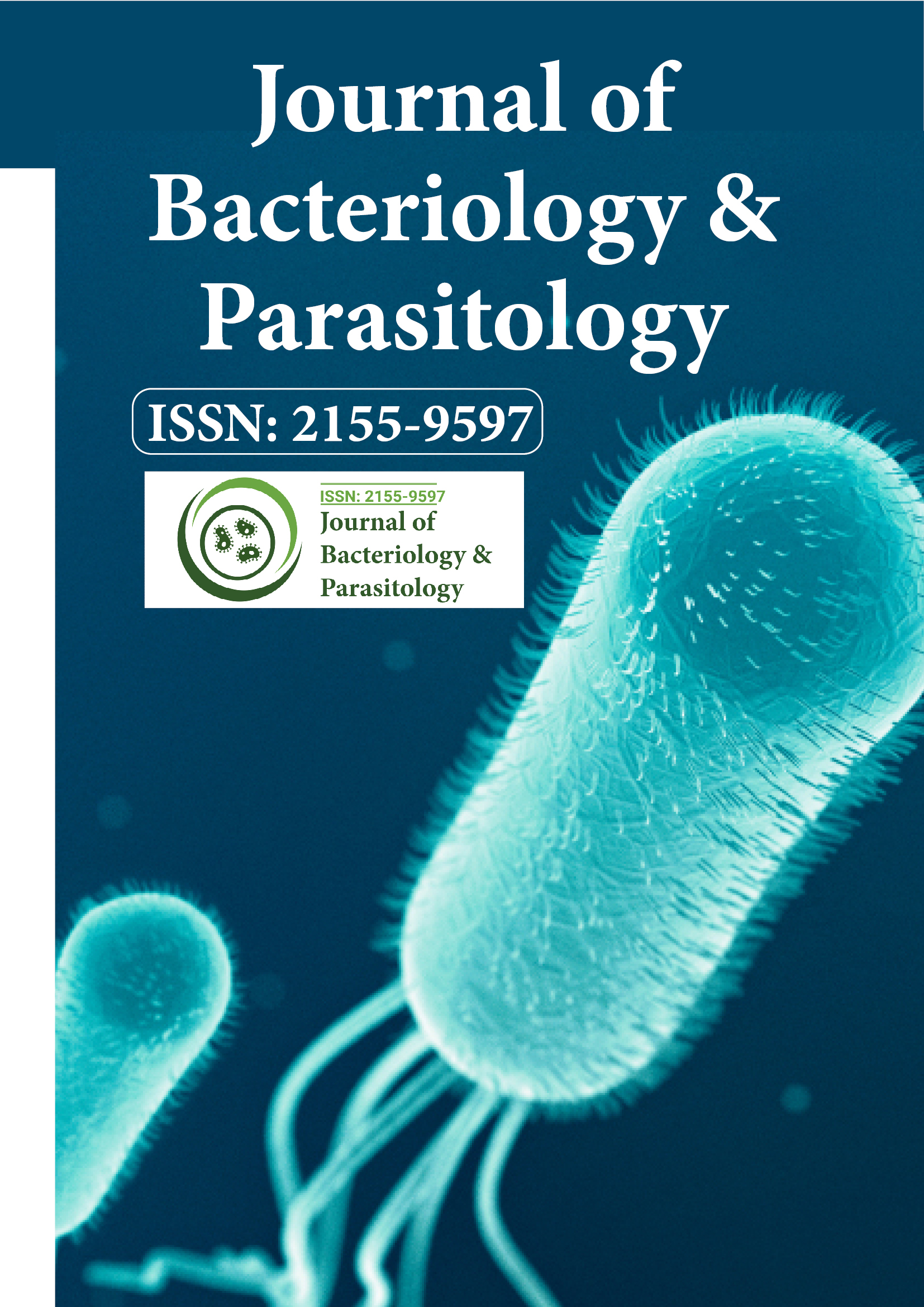Indexed In
- Open J Gate
- Genamics JournalSeek
- Academic Keys
- JournalTOCs
- ResearchBible
- Ulrich's Periodicals Directory
- Access to Global Online Research in Agriculture (AGORA)
- Electronic Journals Library
- RefSeek
- Hamdard University
- EBSCO A-Z
- OCLC- WorldCat
- SWB online catalog
- Virtual Library of Biology (vifabio)
- Publons
- MIAR
- Geneva Foundation for Medical Education and Research
- Euro Pub
- Google Scholar
Useful Links
Share This Page
Journal Flyer

Open Access Journals
- Agri and Aquaculture
- Biochemistry
- Bioinformatics & Systems Biology
- Business & Management
- Chemistry
- Clinical Sciences
- Engineering
- Food & Nutrition
- General Science
- Genetics & Molecular Biology
- Immunology & Microbiology
- Medical Sciences
- Neuroscience & Psychology
- Nursing & Health Care
- Pharmaceutical Sciences
Commentary - (2024) Volume 15, Issue 3
Genomic Perceptions into the Evolution of Parasite-Bacteria Interactions
Ashour Othman*Received: 27-Aug-2024, Manuscript No. JBP-24-27254 ; Editor assigned: 30-Aug-2024, Pre QC No. JBP-24-27254 (PQ); Reviewed: 13-Sep-2024, QC No. JBP-24-27254 ; Revised: 20-Sep-2024, Manuscript No. JBP-24-27254 (R); Published: 27-Sep-2024, DOI: 10.35248/2155-9597.24.15.518
Description
The complex interactions between parasites and bacteria represent an attractive field of evolutionary biology. As organisms have co-evolved over millions of years, their interactions have been shaped by various ecological and evolutionary pressures, leading to complex dynamics that can influence health, disease and ecosystem functioning. Recent advancements in genomic technologies have provided unprecedented insights into these interactions, allowing researchers to resolve the molecular underpinnings of how parasites and bacteria coexist, compete and sometimes collaborate.
The evolutionary context of parasite-bacteria interactions
Parasites, ranging from unicellular protozoa to multicellular helminthes, often rely on various microorganisms, including bacteria, to complete their life cycles, enhance virulence, or evade host immune responses. Conversely, certain bacteria have evolved alongside parasites, adapting to exploit their hosts for survival or reproduction. The evolutionary arms race between these organisms drives genetic diversification and innovation.
One notable example is the relationship between the protozoan parasite Plasmodium, which causes malaria and the bacteria Wolbachia. The latter is an endosymbiosis bacterium that influences the reproductive strategies of its hosts, including mosquitoes. Studies have shown that Wolbachia can manipulate the reproductive output of mosquitoes, potentially reducing the transmission of Plasmodium. Genomic studies have identified specific genes in Wolbachia that are essential for these interactions, highlighting how bacterial symbioses can modulate the life history traits of their hosts to benefit their own survival.
Genomic techniques and their impact
The advent of high-throughput sequencing technologies has revolutionized our understanding of parasite-bacteria interactions. Whole-genome sequencing allows for the detailed characterization of both parasite and bacterial genomes, revealing not only genetic variations but also evolutionary adaptations. For instance, comparative genomics can elucidate the gene families that have expanded or contracted in response to the pressures exerted by host-parasite dynamics.
Metagenomic, the study of genetic material recovered directly from environmental samples, further enhances our understanding of these interactions. It enables researchers to investigate the complex microbial communities associated with parasites in their hosts. This approach has been instrumental in identifying novel bacterial species that may play pivotal roles in modulating the fitness and pathogenicity of parasites.
Mechanisms of interaction
Parasite-bacteria interactions can be classified into various types, including mutualism, commensalism and parasitism. Understanding the genomic basis of these relationships is essential for elucidating the evolutionary mechanisms at play.
Mutualism: In some cases, bacteria confer benefits to parasites, such as increased virulence or enhanced nutrient acquisition. For example, the Entamoeba histolytica parasite, which causes amoebic dysentery, has been found to harbor specific bacteria that help it evade the host immune response. Genomic analyses revealed that these bacteria produce factors that inhibit the host's inflammatory response, enabling the parasite's survival.
Commensalism: Bacteria can also coexist with parasites without directly benefiting or harming them. Genomic studies have shown that the presence of certain commensal bacteria can influence the growth and reproductive success of parasites by altering the host environment. For example, bacterial metabolites can affect the gut microbiome of a host, which in turn may impact the life cycle of intestinal parasites.
Parasitism: Parasitism in the microbial world is a absorbing example of co-evolution, where bacteriophages act as predators to bacterial parasites. By specifically targeting bacterial symbionts of larger parasites, bacteriophages can disrupt the intricate relationships between the host parasite and its bacterial community.
This interaction offers a unique perspective on how pathogens, both viral and bacterial, shape the ecology of their hosts and the broader ecosystem. Studying these genomic interactions not only deepens our understanding of microbial dynamics but could also open new avenues for therapeutic interventions, such as using bacteriophages to manage bacterial infections in parasitic diseases.
Citation: Othman A (2024). Genomic Perceptions into the Evolution of Parasite-Bacteria Interactions. J Bacteriol Parasitol. 15:518.
Copyright: © 2024 Othman A. This is an open-access article distributed under the terms of the Creative Commons Attribution License, which permits unrestricted use, distribution, and reproduction in any medium, provided the original author and source are credited.

